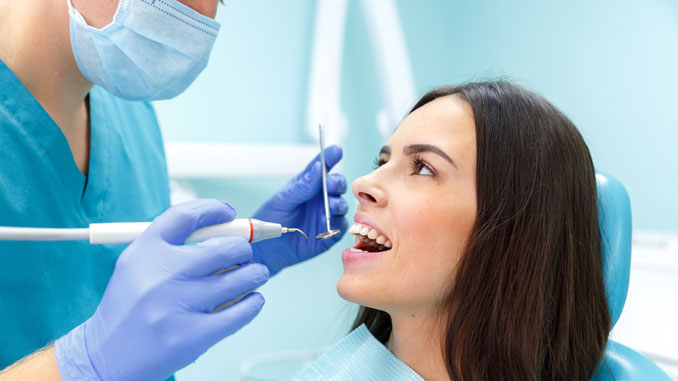
In our lifetime, it’s likely that we will need an emergency dentist in Spokane, WA at least once. No matter how well we look after our teeth, there’s always a chance something will go wrong. Whether you chip your tooth, get toothache or get a wisdom tooth, you never know what it might be. And there’s a lot more to dental care than brushing and flossing, and a dental hygiene routine that leaves one person with those picture-perfect pearly whites might not work so well for another. With so many misconceptions about the best approach to dental health, we’re here to address common fallacies and bust those dental myths. Also, if you’re concerned about your oral hygiene, it would be beneficial to visit a respected dentist and have your oral health looked at by a medical professional.
Myth 1: It’s only a baby tooth.
Don’t let this myth lull you into a sense of complacency with your children’s baby teeth. Kids should be taught early the importance of keeping their teeth clean and should develop good hygiene habits early. Even though baby teeth fall out around age five or six, they serve an important role in the spacing of permanent teeth, helping prevent crowding and other problems down the road. Permanent teeth develop just below the baby teeth, meaning that cavities or infection in the baby teeth can actually spread to permanent teeth, too, even before they erupt. Plus, healthy baby teeth are important for supporting good pronunciation when a child is learning to speak.
Myth 2: But fluoride is bad for you!
For some reason, fluoride has a bad reputation. Here is the truth. Fluoride is a naturally occurring chemical that can be found everywhere from ground water to tealeaves. It plays an important role in the mineralization of bones and teeth and is believed to prevent the growth of bacteria that causes dental cavities. It also aids in the remineralization and repair of damaged teeth.
Over exposure to fluoride before the age of two can lead to dental fluorosis, a cosmetic condition where white spots appear on the surface of teeth, however, excessive quantities of fluoride must be consumed to reach this point. Either way fluoride toothpaste shouldn’t be used until children are older. The amount of fluoride allowed in drinking water isn’t a concern either as it is strictly regulated and well below levels that could cause harm.
Need more proof? Studies have found that populations living without fluoridated water can have more than 30-45 percent more cavities.
Myth 3: Root canals hurt!
While there is some discomfort to be expected during and after a root canal, most of the pain you experience will be leading up to the procedure before the infected portion of the tooth is cleaned and filled. Since anesthesia is used during the procedure, a root canal shouldn’t be any more painful than a typical filling.
Slight sensitivity is normal in the days following a root canal, but can be easily treated with over-the-counter pain medications. If pain persists, you should contact your dentist as there may have been an unseen complication during the procedure.
Myth 4: You can’t get a cavity if you brush every day.
It can feel like a betrayal to hear the dentist tell you that you have a cavity. “But I brush twice a day!” you protest. “How could this have happened?”
Unfortunately, dental health, like all matters of healthcare, varies from person to person. Some people are naturally more susceptible to cavities and sometimes other factors can play into dental health-such as a diet high in sugar, which can lead to increased bacteria growth, or acidic foods, which damage the enamel and weaken teeth.
Myth 5: Whitening strips really whiten my teeth!
Wrong again. Whitening strips are more like a Band-Aid-you can’t see the problem anymore, but it’s still there. Teeth start to appear more yellow as the enamel (the hard, white outer layer of the tooth) is damaged and the yellow, softer dentin beneath is exposed.
Whitening strips can’t repair your enamel-actually, nothing can. Enamel doesn’t have any living cells and can’t regrow; that’s why it’s so important to protect it in the first place.
Instead, your trusty whitening strips are just removing surface stains. Aesthetically, this can be a temporary fix to yellowing teeth, which is fine. It may have you wondering how long do crest white strips last if you need whiter teeth for a special occasion, and there’s nothing wrong with that, but for lasting results you’re better off committing to a good dental routine and continued use of a whitening toothpaste. Keep in mind that having too aggressive of a whitening routing can, however, lead to tooth sensitivity.
Myth 6: Diet sodas are fine for my kids’ teeth since there’s no sugar.
So, we’ve established that sugar leads to more bacteria in your mouth, which in turn leads to cavities. Easy enough. Just switch to diet soda, right? Well, no. Diet sodas, 100 percent citrus juices, and many other sugar-free drinks swap out sugar for acid, which can also be incredibly damaging to teeth when consumed in large quantities. To avoid the tooth sensitivity that comes with a high-acid diet, opt to give your kids drinks with lower acidity like water, milk, or tea. Surprisingly, root beer and, for mom and dad, black coffee are also on the list of low-impact drinks (just opt for a sugar-free creamer in your morning cup of joe).
Myth 7: Brushing more than once a day can hurt your enamel.
There is a grain of truth to this dental myth: brushing too much can lead to sensitive teeth and receding gums. However, dental experts agree that you’re not going to run into this issue if you’re brushing twice daily for two minutes as recommended. You start seeing these complications if you brush three or more times a day for an extended period of time.
If you feel like your teeth aren’t getting clean enough with two daily brushings, try a different toothbrush (electric toothbrushes are commonly recommended by dentists to get your teeth squeaky clean) or different toothpaste that leaves your mouth feeling fresher.
Myth 8: Oral health only goes as far as my mouth.
Not only can your oral health-or lack thereof-affect the rest of your body, but your overall health can also affect the health of your mouth and teeth.
An overabundance of bacteria in your mouth (often stemming from poor oral hygiene) can lead to conditions such as endocarditis (occurring when bacteria gets into the bloodstream and causes an infection of the inner lining of the heart), pneumonia, and pregnancy and birth complications.
Also, factors like stress, tobacco use, and diet can have an impact on dental health. Some diseases, like diabetes and HIV/AIDS, have been found to lower the body’s resistance to infections and can lead to further dental problems. Osteoporosis and Alzheimer’s disease can also negatively impact oral health.
Myth 9: You only need to go to the dentist if your teeth hurt.
By the time your teeth hurt, the nerve has become inflamed and what started as a minor issue has now reached the point where you may need more invasive treatment to address the problem. Many dental issues can be prevented before they ever cause pain by simply keeping up with regular dental checkups and cleanings.
Myth 10: My teeth are only bad because I’m getting old.
While it’s true that a lifetime of wear and tear is eventually going to show on teeth, following a good oral hygiene regimen can prevent many issues that people often dismiss as an unavoidable part of aging. To avoid causing more damage to teeth, don’t chew ice or hard foods like hard candy and look into a mouthguard if you grind your teeth at night.
Saliva plays an important role in oral health (it helps minimize the effect of bacteria), but many medications can cause dry mouth. If you’re on medicines that list dry mouth as a side effect, drink more water and ask your doctor about other options.
Myth 11: Braces are a one-and-done treatment.
If you’re lucky, you might be blessed with naturally straight teeth, but most people will need orthodontic care to get that picture-perfect smile (and to address problems like overbite or underbite). You may think it at the time, but you aren’t the first person to have braces and you certainly won’t be the last. There are many other people around the world who need to have braces fitted to help them with the alignment of their mouths, as well as having a smile that you can be proud of. Professionals, like the ones over at altaskydental.com will be able to help you with this process so that you don’t have to go through it alone. You’ll be thankful you did after you see your new smile for the first time. But just because you had braces as a teen doesn’t mean your teeth will stay put. If you stop wearing your retainer, your teeth may shift again, requiring further treatment. And sometimes you need braces more than one time to fix the initial problem.
Myth 12: If I brush harder, my teeth will be cleaner.
One of the most common mistakes dentists see is that people are brushing too hard, which can lead to receding gums. Plaque is soft and loose, so you don’t have to brush hard to get your teeth clean. Regular flossing can help get to any plaque your toothbrush misses, but if you’re struggling to remove grime, the problem might be with the toothbrush itself. Make sure you’re using a soft bristled toothbrush so the bristles bend enough to get between teeth and under the edge of your gums.

